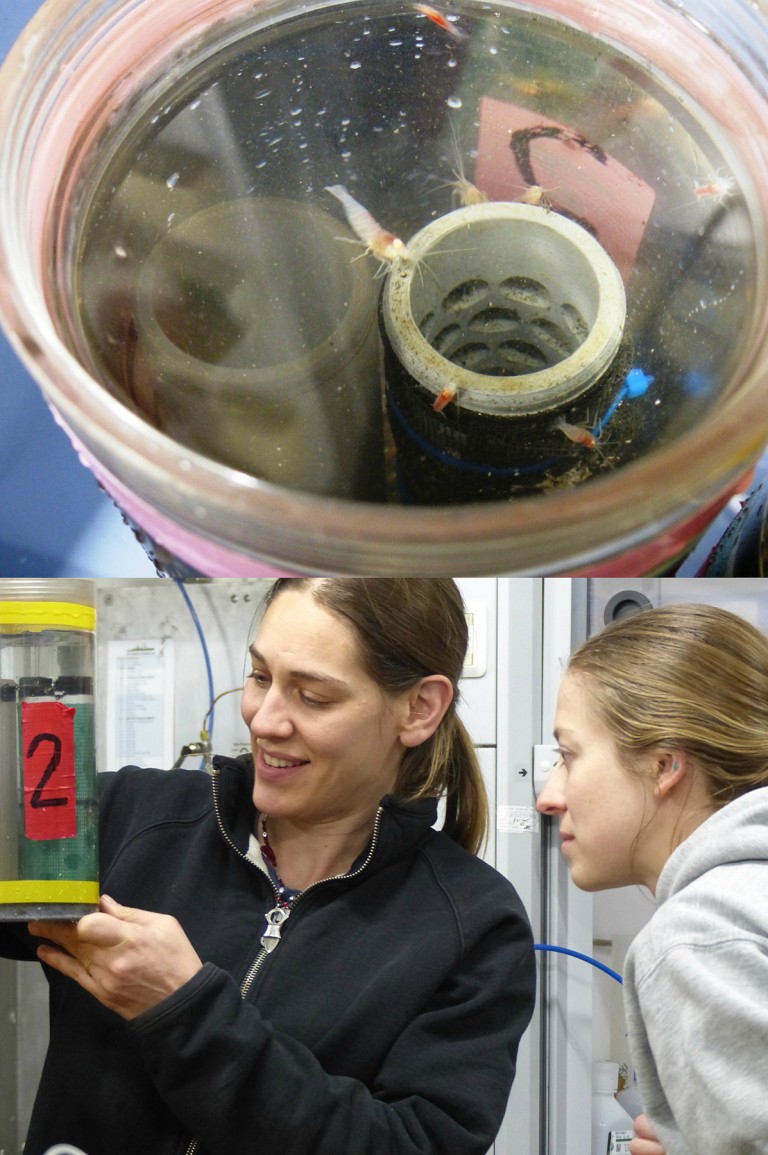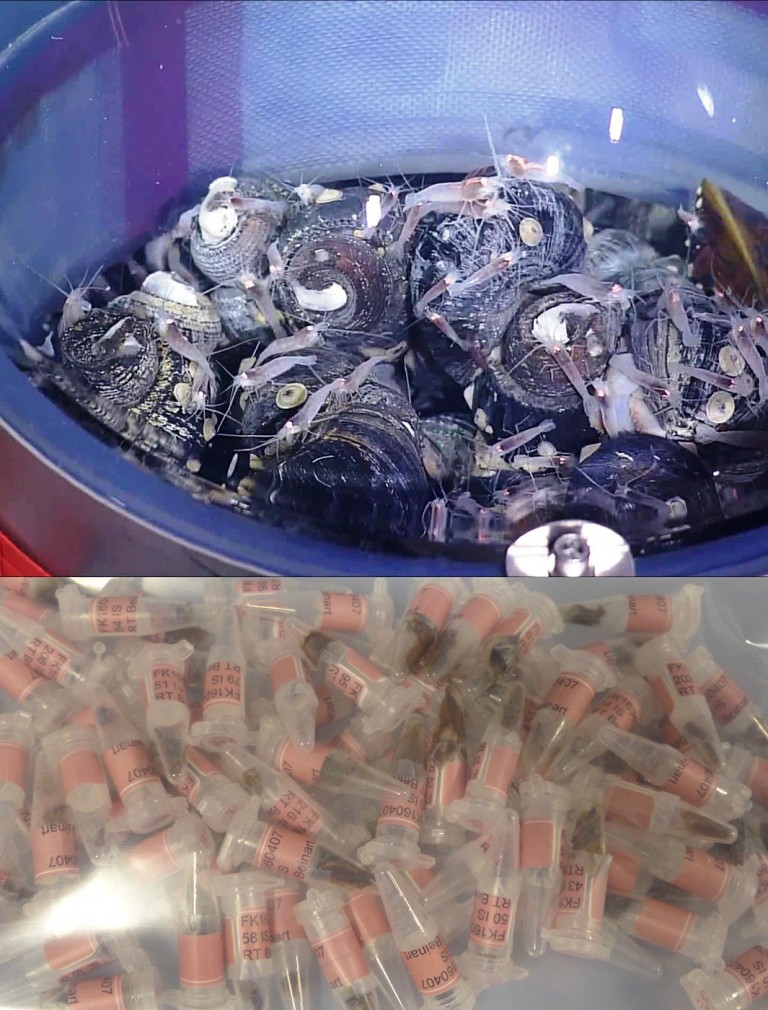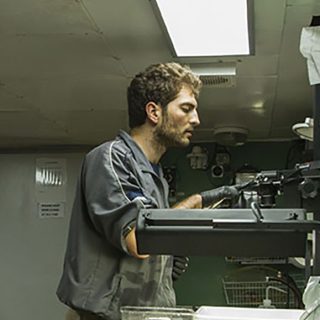How do scientists know so much about animals? How do they know how animals live their lives? What do they eat? What conditions do they like? How do they choose a mate? What is their family history? Finding some of these answers is more straightforward than others.
For example, we can learn what temperatures the chemosynthetic vent snails Alviniconcha spp. and Ifremeria nautilei prefer by taking measurements where we find them or by examining which conditions they gravitate towards in the lab (as Arunima Sen has described in a previous blog). On the other hand, learning what vent fauna have eaten throughout their lives or their evolutionary history requires clever techniques, since these are not easily observable – or not observable at all.

Learning how vent fauna live their lives is particularly difficult since the vents we visit are 2-3 km deep. This depth requires the use of remotely operated vehicles (ROVs) which means we only visit these sites once every few years. Yet we can still learn how these fascinating animals live. On this cruise, we are investigating whether species such as the shrimp, Alvinocaris, change what they eat through time as vent chemistry changes. To answer this, we cannot simply watch a shrimp as it eats for years. Instead, we use stable isotopes.
Many common elements come in multiple stable forms or isotopes. For example, a carbon atom can have 12 or 13 neutrons and a nitrogen atom can have 14 or 15 neutrons. The ratio of carbon-12 to carbon-13 and the ratio of nitrogen isotopes in the tissue of animals can tell us what they eat. Basically, you are what you eat. The stable isotope ratios of your tissue reflects what you eat. For example, chemosynthetic organisms (and those that eat them) tend to have much less carbon-13 and nitrogen-15 than organisms positioned in food chains rooted in photosynthesis. Using this and other trends, we can construct a food chain and see how it differs since we last visited all without a single feeding observation.

We are also interested in the population structure of the vent snails and their symbiotic chemosynthetic bacteria. In other words, do snails from one vent site mate with snails from other sites, or are they isolated? These snails are broadcast spawners, meaning they release eggs and sperm into the water column to fertilize. How far do their larvae wander before settling on a vent? We don’t know, and we cannot follow these microscopic larvae as they wander about. Their larvae may be able to wander between sites. Similarly, the chemosynthetic bacteria that live within the gills of these snails can live outside the snails for an unknown period of time. Do the symbionts travel between sites or do they stay within site? Are lineages of symbiotic bacteria loyal, sticking with a specific snail lineage for generations, or could they care less? We can answer these questions easily with genetics. We can determine patterns of relatedness by examining the similarity of specific genetic sequences.
By using a myriad of molecular techniques such as genetics and stable isotopes, scientists can learn how animals live their lives when it would seem impossible to observe.

